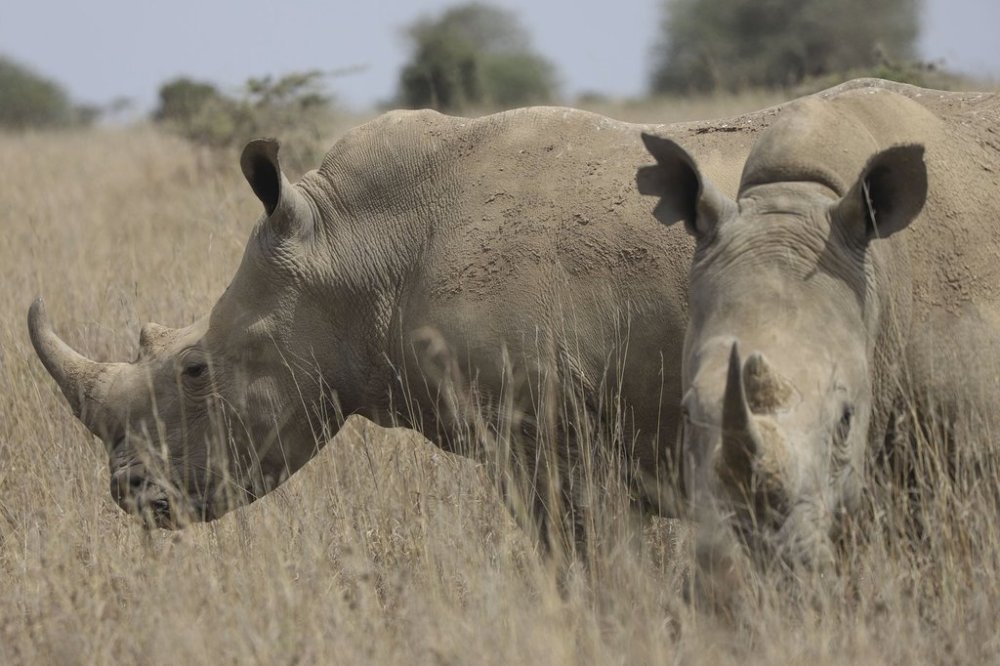The world’s black rhino numbers have increased but there’s bad news for others
Advertisement
Read this article for free:
or
Already have an account? Log in here »
To continue reading, please subscribe:
Monthly Digital Subscription
$0 for the first 4 weeks*
- Enjoy unlimited reading on winnipegfreepress.com
- Read the E-Edition, our digital replica newspaper
- Access News Break, our award-winning app
- Play interactive puzzles
*No charge for 4 weeks then price increases to the regular rate of $19.00 plus GST every four weeks. Offer available to new and qualified returning subscribers only. Cancel any time.
Monthly Digital Subscription
$4.75/week*
- Enjoy unlimited reading on winnipegfreepress.com
- Read the E-Edition, our digital replica newspaper
- Access News Break, our award-winning app
- Play interactive puzzles
*Billed as $19 plus GST every four weeks. Cancel any time.
To continue reading, please subscribe:
Add Free Press access to your Brandon Sun subscription for only an additional
$1 for the first 4 weeks*
*Your next subscription payment will increase by $1.00 and you will be charged $16.99 plus GST for four weeks. After four weeks, your payment will increase to $23.99 plus GST every four weeks.
Read unlimited articles for free today:
or
Already have an account? Log in here »
CAPE TOWN, South Africa (AP) — The number of critically endangered black rhinos has increased slightly, but there is bad news for other rhino species, according to a global count released Thursday by the International Rhino Foundation.
It said that black rhino numbers went up from 6,195 to 6,788 in the latest estimates. White rhinos had declined, however, from 15,942 to 15,752 since the last count in 2021. Black and white rhinos are only found in the wild in Africa.
The number of greater one-horned rhinos, found in northern India and Nepal, rose slightly from 4,014 to 4,075.

But Javan rhinos have declined from an estimated 76 to just 50, the foundation said, and that was entirely due to poaching. There is only one known population of Javan rhinos left — at a national park on the Indonesian island of Java.
The Sumatran rhino population stands at just 34-47 animals, around the same as previous estimates.
The global population for all rhinos is approximately 26,700.
The International Rhino Foundation says it gets its figures from counts by specialist rhino groups at the International Union for the Conservation of Nature, the global authority on endangered species. It does not count rhinos in zoos, only those in the wild or in national parks.
The rhino foundation said there were worrying new trends from South Africa, which has more rhinos than anywhere else. There, the average number of rhinos in individual populations was below what conservationists recommend to maintain a viable population.
It also said a new rhino horn trafficking route was emerging between South Africa and Mongolia, and Qatar was becoming a growing hub for horn trafficking. Rhino poaching is still a major problem in South Africa and elsewhere to feed the illegal market for rhino horn products in parts of Asia. South Africa loses between 400 and 500 rhinos a year to poaching.
It is often looking for new ways to deter poachers and one group of scientists launched a project last week to inject radioactive material into the horns of rhinos. The scientists say it’s harmless for the animals but allows horns to be detected by border authorities when they are being smuggled.
___
AP Africa news: https://apnews.com/hub/africa

